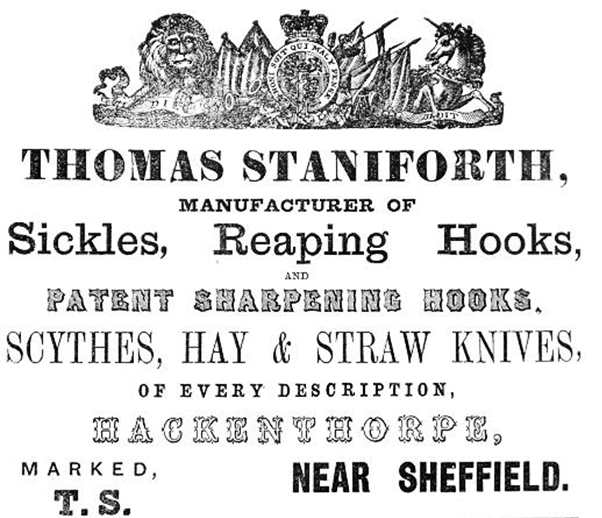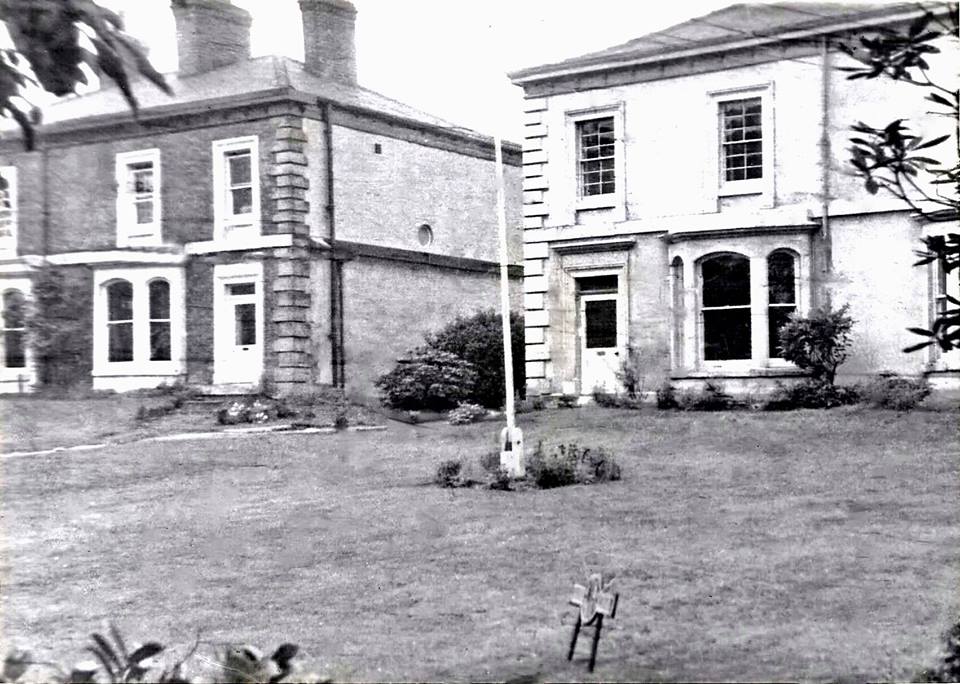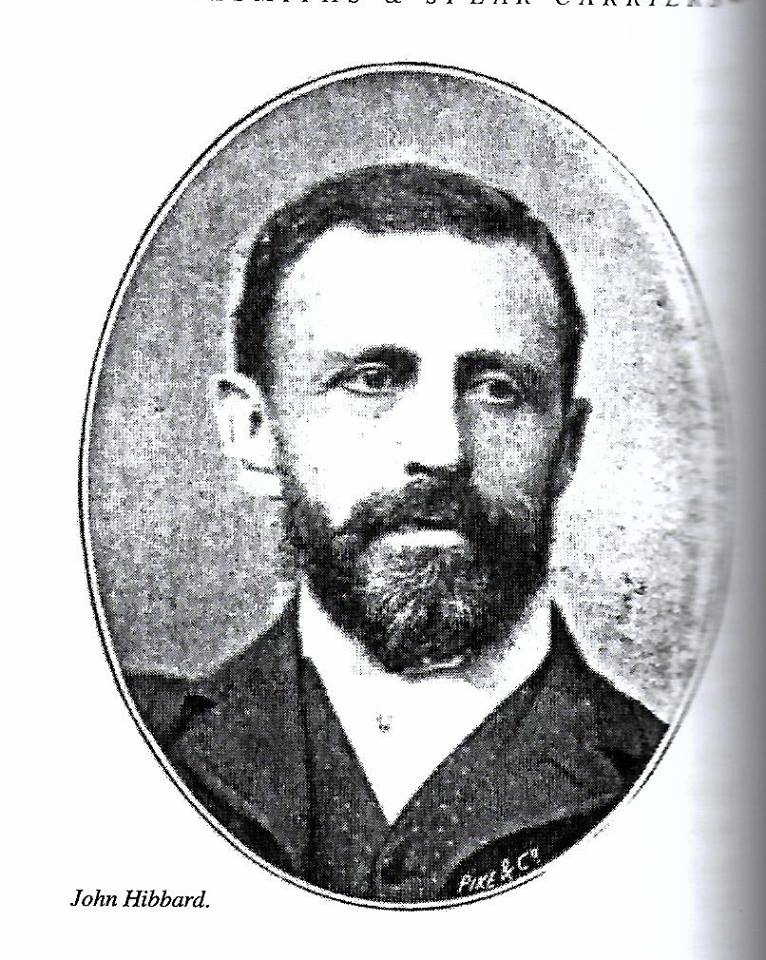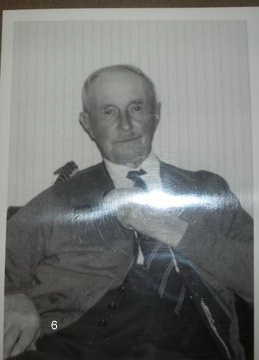
Thomas Staniforth & Co. Sickle works at Hackenthorpe.
 William's Company Signature
William's Company Signature
William Staniforth was born in 1840 at Hackenthorpe to Thomas Staniforth and Mary Jane Hardy. Due to his elder brother Thomas Staniforth passing away, he inherited his father’s Sickle and Scythe manufacturing business, however unlike his father, grandfather and great grandfather before him, by the time his father passed away in 1873, a company had already been formed between William himself, his father Thomas, and his two brother-in-laws Rowland and John Hibbard. Rowland had however passed away only two years after signing the required paperwork.
This marked the first time in centuries that members of another family were in control of the Staniforth family business. It should be noted however, that Rowland and John Hibbard were in fact blood relatives, Thomas’s mother Ann Hibbard was an aunt to John and Rowlands father, as it was her brother Rowland Hibbard who had son John Hibbard in 1819, John then married Hannah Hibbard, a daughter of George Hibbard, another brother to Ann and Rowland and it was this couple that had Rowland and John.
On June 21st 1871, William married Sarah Hannah Moorwood at the Ridgeway Methodist Chapel in neighbouring Eckington parish. Sarah was the daughter of William Moorwood. William was a druggist originally from Ecclesfield.
With both Thomas Staniforth and Rowland Hibbard passing away, the sole partners of Thomas Staniforth & Co. was William Staniforth and John Hibbard. This period of time in the 1870s was particularly hard in England, the American Civil War was now over and the American economy was growing. It was decided that hand forging would be discontinued around 1875. From this point Sickles were now cut from iron bars and shaped cold before being hardened and ground. Shortly after this around 1876 the business took over Castle and Turton, another Scythe, sickle and knife manufacturer. Finally in 1879, the company surrendered the lease on the Carr Forge Wheel on the Shire Brook.
During the 1880s many changes were made at Thomas Staniforth & Co. New machinery was introduced which allowed for the crafting of solid steel sickles, rather than steel and iron welded together, this reduced the need for hand labour. Various farming tools were also introduced such as reaper hooks and riveted scythes.
This meant that the workers had to take a pay cut, the sickle forgers were reluctant however accepted the cut, however the grinders, known as ‘yellow-bellies’ due to them being covered in a yellow dust caused by the grinding wheel refused to accept the pay cut.
These men were part of a Union known as the Sickle Grinders Union, and it was decided that Non-Union workers would be brought in to cover their work, this caused the striking union workers to return to their jobs, however violence soon erupted.
Towards the end of September, Hackenthorpe and the surrounding areas were once again shook. Three Non-Union sickle grinders were sleeping when an attempt was made to blow them up. A few months later, Elias Havenhand, another Non-Union sickle grinder had his front door blown away at his home in Mosborough. A final third Non-Union worker received a threatening letter.
William Staniforth himself then received a letter which was headed ‘Blue Boy Street, Sheffield’. The letter read ‘Ho think the better incure the life and send the wife and children to seaside. Ho well blo the to hell sum neet thes that there b— that comes here Berley More hol get that b—- wot for sum net’ (I think thee’d better insure thee life and send the wife and children to seaside. I will blow thee to hell some night, there’s that there b—— that comes here Birley Moor I’ll get that b—- what for some night.)’. The letter was simply signed ‘Grinder Joe from Sheffield’. The man referenced as coming from Birley Moor was John Hibbard.
John Hibbard and William Staniforth both advertised a reward of £10 for information leading to the conviction of the author of the letter. The Handsworth Association added a further £2. Nobody was caught, and during the following February the engine man went to check on his fires one Sunday when he discovered one of the fire grates had been blown away. Brickwork was also damaged, and a gallon bottle charged with gunpowder was found in the ash pit below the fire. The attacker had intended for the boiler to be completely destroyed. Due to such a serious attack, the two partners increased the reward to £100 and the Handsworth Association added another £5. Still nobody was caught, and it was arranged with the police that a mounted guard should patrol the Sickle works during the night. Nothing happened for three months.
Due to the inactivity, the police decided to lay a trap. The police would pretend to leave the area in the hopes that the attacker would think the coast was clear. On Saturday the constable that had been on duty gave his ‘final goodbye’ and left the scene. When nightfall fell he returned with another constable and a superintendent and they all hid behind the engine-house.
Around one o’clock whispers were heard and two men appeared. One man was carrying something bulky, he took the object over to the Slack heap and placed it under the firing hole. Through the darkness they could see a long fuse being attached to a large stone bottle which was corked. One of the men said “All right, fire up”. This caused the superintendents to make their presence known. One of the men was on his knees attempting to light the fuse, although he made an attempt to escape, he was knocked to the ground before reaching the gates. The other man was caught by the constable.
The entire court proceedings were recorded in the Sheffield and Rotherham Independent. Seven pounds of gunpowder had been used and the fuse measured 23ft, 4in in length. The attackers in question were a Collier James Reaney and a labourer Robert Atkin, both from Dronfield. The court burst into laughter at one point when it was reported that James Reaney told the superintendent “Don’t go back, we shall be murdered; we shall be blown up”. Mr. Reaney also mentioned that there was actually three men involved “I know there’s three in t’job and t’other ought to come as well as us, someone set us on and promised us £15 for t’job, when it was done—£5 each. He would not tell us what it war for: he said it was only a bit of tinkering that wanted blowing up.”
The court agreed that the two men were tools in the hands of the Union workers and the police were congratulated on the arrest and for foiling their attempts at setting the explosion in what would likely have meant the destruction of the Staniforth sickleworks.
In 1883 the demand for tools such as Scythes was high and Staniforths asked another firm, Tyzack’s if they would forge for them due to the high demand, but they had to decline as they were in a similar situation themselves.
During this time period it is worth noting that William was in contact with his Uncles Mark Staniforth, now living in Birkenhead, and Henry Staniforth of Mosborough Hill House.
One particular letter written in the summer of 1876 by Mark Staniforth to his brother Henry Staniforth survives, in the letter he wrote:
‘I am sorry to hear that the firm at Hackenthorpe are not insured, it is a great pity and must shew gross Neglect in some one and I think with you & always have done that had you still been in the ‘Firm’ things would have been very different in every way. I really cannot see how they can find so much employment for so many hands in the Counting House. I scarcely understand you when you say there are only 11 Makers—whether they are Sickle and Hook Makers or Scythe Masters—at all events be which it may it shews them to be in a poor way & in the Counting House… I think it is very wrong to turn poor Johnny Bird off after being such a number of Years there—he was a good turner but rather slow but did his work as well or rather better than some of them’
This is the first of many pieces of evidence we find where it is made clear that the older family members are unhappy with the way things were being ran between John Hibbard and William.
Another letter written by Mark, dated 8th December 1886:
I am very glad that William’s affairs are not so bad as it was thought they would be at the first, if he had only a little more spirit to stick up for himself and not let that D—d young Hibbard have so much of his own way it would be a great deal better for him, for more he gives way and worse it will be for him—it was not right of Hibbard to refuse to renew the lease after promising he would and causing William unnecessary expense—it is a pity the Hibbards have got such a hold—I saw the announcement of the sale of Wm’s Waggonette.
Mark Staniforth passes away less than two months after writing the letter, of a stroke, then called apoplexy.
Mrs. Rosamund Du Cane, in her publication notes that this letter raises many questions, where was the property that William wished to renew the lease, Mrs. Du Cane questions whether this could have been Brook House, which still stands opposite the Staniforth works. Rowland Hibbard was residing at the house when he passed away, so it could be possible that John inherited it from his brother. It is also unclear why William felt he needed to sell his Waggonette, was he in need of money, or was John Hibbard trying to ease him out of a management role?
 The Terrace, William's home in Beighton.
The Terrace, William's home in Beighton.
In 1887, Mary Jane Staniforth, William’s mother passed away. She made William her executor. If William should have died, or chose not to act, John Hibbard would take his place.
In March 1893, an announcement was made in the London Gazette announcing the dissolution of William Staniforth and John Hibbards partnership. The notice proclaims that all debts due and owed were to be paid by John Hibbard, and from that point forward all business would be carried on by him.
William filed for Bankruptcy the following month, in this petition he is described as ‘retired scythe and Sickle Manufacturer’ and by this point had moved out of Hackenthorpe and was living at The Terrace in nearby Beighton.
By this point William was in a bad way, it had been noted for some time that William had a drinking problem and it would appear that it was starting to take a toll on his body. William’s eldest son Thomas Staniforth, born 1877 was set to depart for Stuttgart, Germany. Thomas was a gifted linguist and was set to be taken on by a language tutor. Thomas had already received an expensive education and this trip was to be the final phase. All the plans that were set in place were suddenly cancelled and Thomas instead took a job as a wire-rope maker. He remained in this position for the rest of his life, always blaming his father’s business failings.
Thomas Staniforth was not the only child William and Sarah had throughout their marriage, in total they had two sons and three daughters:
All of the sisters had received a first class education, allowing them to work for themselves. Margaret and Elaine eventually relocated to London to work as Governesses. Elaine was with the Lloyd banking family, and Margaret with a doctor on Harley Street. William Moorwood Staniforth was not so fortunate, being only nine years old when his father filed for bankruptcy, he served in the Great War with the Queen’s Own Yorkshire Dragoons but was killed during training in 1917.
In the final year of the 19th Century, in 1899 William Staniforth moved once again, for the final time to 56 Albert Road, Heeley in Sheffield. He was working as a Commercial Traveler, however by this time his health was declining. Due to excessive drinking his organs began to fail, not only his heart but his kidneys. He lapsed into a coma a week before Christmas and on January 2nd 1900, he passed away.
William’s death marked the end of an era in terms of the Staniforth’s of Hackenthorpe, 157 years after his Great-Great Grandfather had founded the business, the final Staniforth associated with the company had passed away, with no control and no means to pass it onto an heir. John Hibbard was now running the company solely by himself and seemed to be doing so successfully.
The same year that William died, more machinery was brought into the Sickleworks which removed the need for any forging. Machines were now used to roll the backs of scythes and knives. It would have been disheartening for William to hear that John Hibbard was a popular employer. When his son John (Jack) married Ethel Jermyn Hounsfield in 1903, workers from the Sickleworks erected two graceful arches outside of the Hibbard home at Greenside House and they presented the couple with a table centre and cut glass. The entire staff were then given a feast in the Board School.
The Woodhouse Express reported on August 13th 1904:
 John Hibbard
John Hibbard
Thomas Staniforth stands out in relief as maintaining its status undiminished against competition from all parts of the globe… under the able direction or Mr. John Hibbard and (many) have lived and hope to die as their ancestors lived and died in the employ of the Staniforth firm.
A letter exists from 1908 in which the Staniforth firm arranged for their employees to travel to Scarborough, the letter was signed by then Manager Charles Helliwell. Charles was the son of George Helliwell, the same man that was bought out by the Staniforth's decades earlier.
By the end of March that year, the company had an overdraft of £3000 and John Hibbard was forced to take out a bank mortgage. He incorporated the business into a Limited Company, making himself Chairman and Managing Director and his two sons John (Jack) and Rowland were named Directors. John Hibbard Jr. passed away two years later at the age of thirty seven.
It seems that the Hibbard family decision to form this company was a curse, as a year later on December 19th, 1911 a meeting was held.
A resolution was passed:
‘That it has been proved to the satisfaction of the Company that this Company cannot by reason of its liabilities continue in business and that it is desirable that the same should be wound up voluntarily and that the Company be would up accordingly’
Within months of this resolution the running of Thomas Staniforth & Co was in the hands of a new partnership that consisted of Alderman W.R. Fox, Alderman E. Peat, Councilor A.E. Hall, Mr. John Jermyn Hutton (Member of the same Ridgeway Sickle Smithing family that competed with the Staniforth's for centuries) and Mr. Charles Helliwell. This marked the end of the Hibbards association with Thomas Staniforth & Co.
 William's son Thomas Staniforth (1877–1963)
William's son Thomas Staniforth (1877–1963)
In 1912, Greenside House was sold to a dealer named Isaac Friend, he sold the house back to the Staniforth’s the following year. It remained in the family’s possession until 1937. John Hibbard and Louisa moved to Crookes, Sheffield. Louisa died in 1920 and John followed three years later, the cause of death was Tuberculosis.
Thomas Staniforth & Co continued to operate throughout the 20th Century before becoming part of Spearwell Tools. In 1970 Spearwell then became part of Spear & Jackson. Spear & Jackson relocated to Birmingham and in 1980 the Staniforth works closed its doors for the final time. The Staniforth name was also removed from all products and the Staniforth’s connection with the Sickle, Scythe and Edge Tool industry was officially at an end.
When researching and recounting the tale of the Hackenthorpe Staniforths, it is worth asking, if Thomas Staniforth had not brought John Hibbard into the Company with William Staniforth, would things have turned out differently? William would likely not have turned to alcohol, and instead would have focused on running the business.
Although Thomas Staniforth & Co. met an unfortunate end, it is clear that for over two hundred years the Staniforth’s tools became known worldwide, from the United States to Russia, and this is a testament to not only the Staniforth family themselves, but also the residents of Hackenthorpe and the surrounding villages.